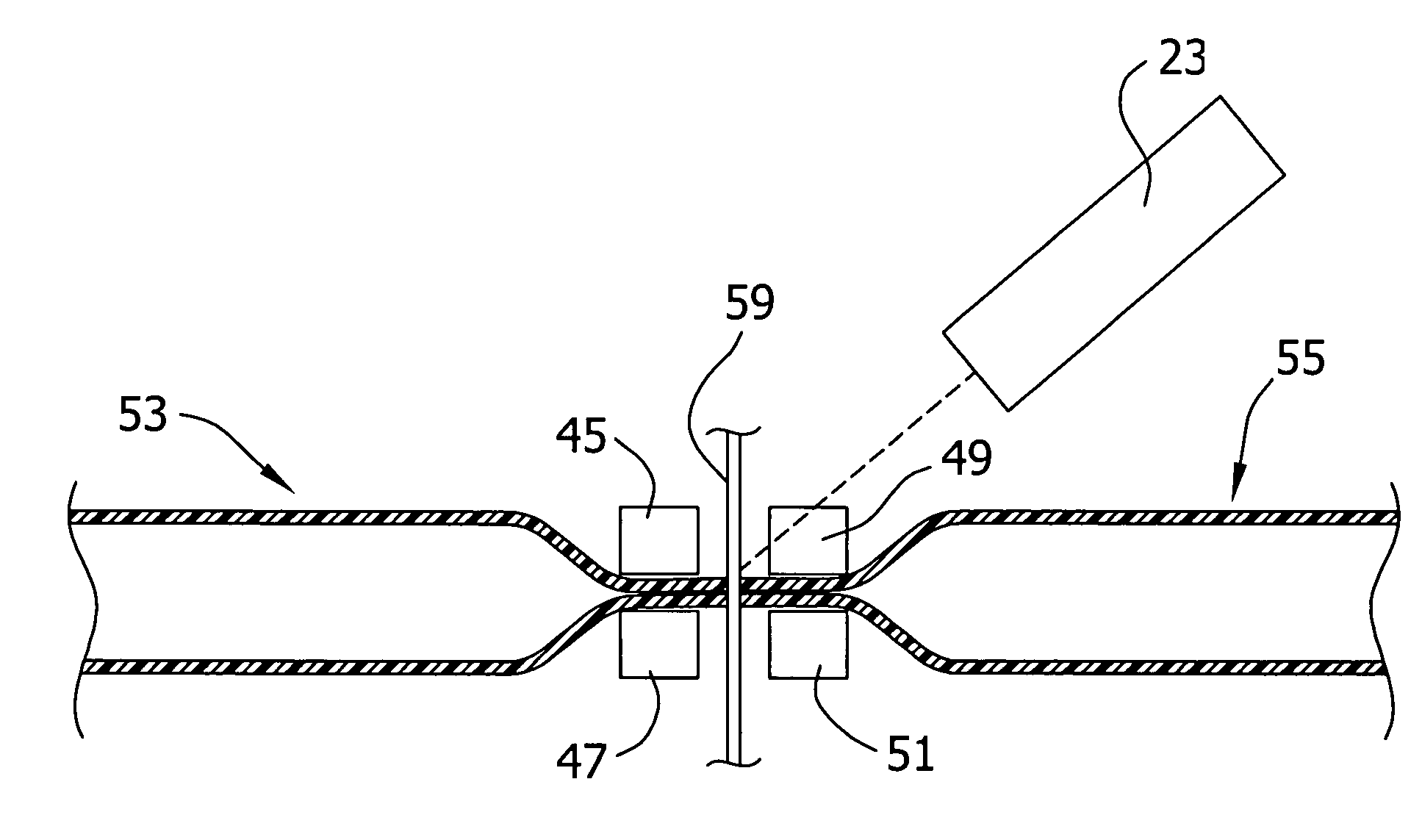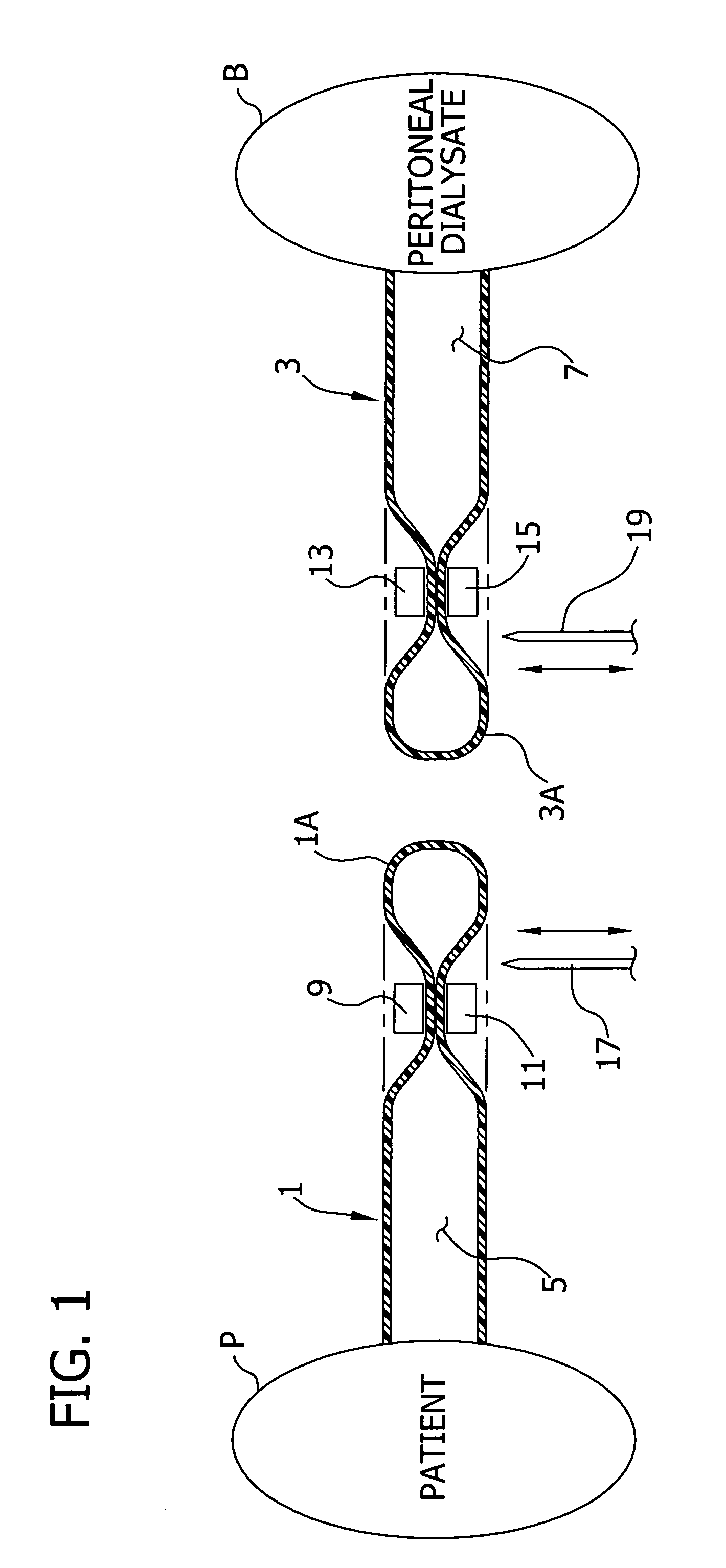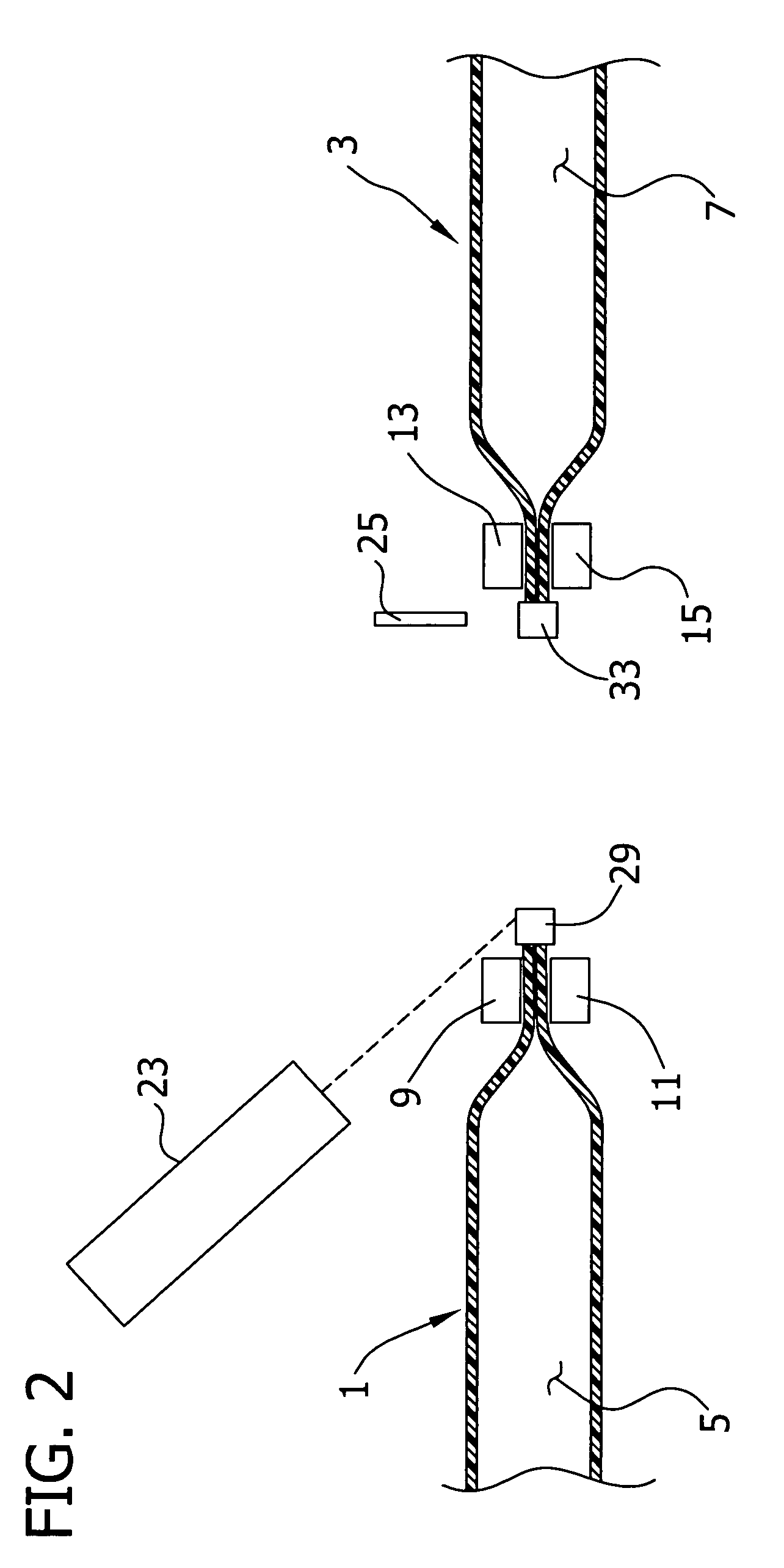Method for sterile connection of tubing
a technology of flexible polymeric tubing and connection method, which is applied in the direction of non-rigid containers, synthetic resin layered products, packaging, etc., can solve the problems of two products not being able to sterilize in the same way, the balance of water, minerals and daily metabolic load cannot be achieved, and the level of sterilization cannot be achieved
- Summary
- Abstract
- Description
- Claims
- Application Information
AI Technical Summary
Benefits of technology
Problems solved by technology
Method used
Image
Examples
Embodiment Construction
[0034]Referring now to the drawings and in particular to FIGS. 1-8, a method and apparatus for connecting two tubing sections are schematically illustrated. The tubing sections (designated generally at 1 and 3, respectively) are shown as having closed end portions 1A and 3A. The present invention has particular, although not exclusive, application where it is important to keep the interior passages (5 and 7, respectively) of the tubing sections 1, 3 sterile or substantially sterile while connection the tubing sections together. The medical uses described in the Background of the Invention are exemplary. In that regard, FIGS. 1 and 8 schematically show the tubing section 1 connected to a patient P and tubing section 3 connected to a bag B of peritoneal dialysate. Typically, the tubing sections 1, 3 are flexible but are not required to be so to fall within the scope of the present invention. The material of the tubing sections should be capable of fusing when heated. Conventional medi...
PUM
| Property | Measurement | Unit |
|---|---|---|
| angle | aaaaa | aaaaa |
| angle | aaaaa | aaaaa |
| thickness | aaaaa | aaaaa |
Abstract
Description
Claims
Application Information
 Login to View More
Login to View More - R&D
- Intellectual Property
- Life Sciences
- Materials
- Tech Scout
- Unparalleled Data Quality
- Higher Quality Content
- 60% Fewer Hallucinations
Browse by: Latest US Patents, China's latest patents, Technical Efficacy Thesaurus, Application Domain, Technology Topic, Popular Technical Reports.
© 2025 PatSnap. All rights reserved.Legal|Privacy policy|Modern Slavery Act Transparency Statement|Sitemap|About US| Contact US: help@patsnap.com



